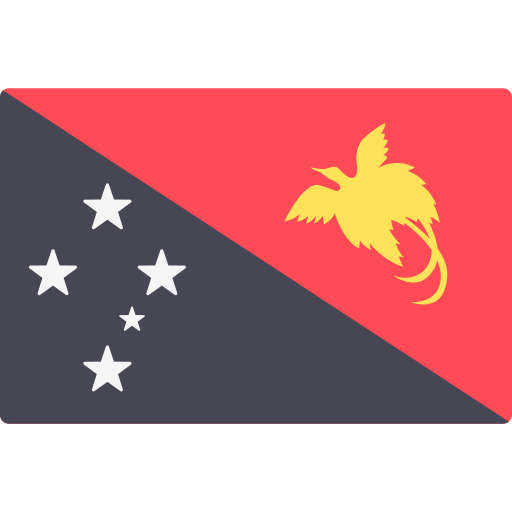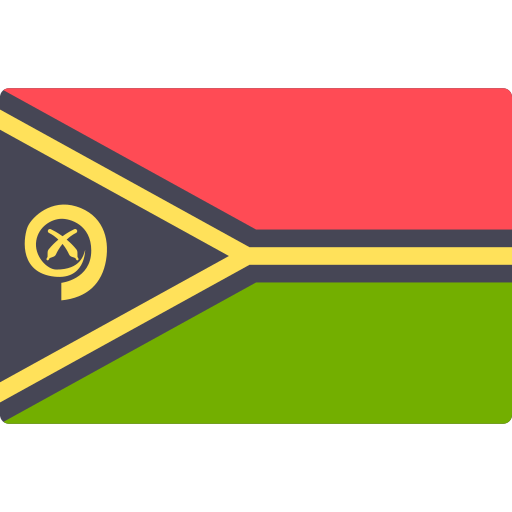The Frontier audio team joined forces to give you the impressively detailed behind-the scenes story on how they made the dinosaur sounds, interface sounds, interactive music system, and so much more for the critically-acclaimed Jurassic World Evolution game.
Written by Jennifer Walden, images courtesy of Universal Studios
In Frontier Development‘s Jurassic World Evolution game (available on PS4, Xbox One, and Steam), you get to try your hand at bringing John Hammond’s dream to life — i.e., creating a park filled with dinosaurs and tourists. I mean, what could go wrong in bringing those two together, right? The game is part mad science (you get to bioengineer dinos and alter their DNA), part resource management, part world-building, and part sinister fun, as there are no rules against letting your dinos loose on unsuspecting park visitors.
The dinos look and sound amazing, everything you’d expect from the Jurassic Park/World franchise. The game sound ties into the films’ sound, so the beloved roars of the T. rex, Indominus Rex, and the newly designed Indoraptor are all part of Jurassic World Evolution. Since the game’s release actually preceded the release of Jurassic World: Fallen Kingdom, it was essential for Frontier’s game audio team to be in constant communication with Universal Studios regarding the Indoraptor’s sound.
But the Indoraptor is just a small piece of a very large sound puzzle. It truly took a village to create the sound of this dino-inhabited microcosm. Members of the Frontier Jurassic World Evolution audio team include: Head of Audio Jim Croft, Lead Audio Designer Matthew Florianz, Senior Audio Designers Duncan Mackinnon, James Stant, and Dylan Vadamootoo, Technical Audio Designer Stephen Hollis, Lead Audio Programmer Will Augar, Senior Audio Programmer Ian Hawkins, Audio Programmer Jon Ashby, Audio Test Engineer Sam Doyle, Audio QAs Robin McGovern and Christopher Jackson, Additional Audio Designer Pablo Cañas Llorente, Music & VO Supervisor Janesta Boudreau, and Composer Jeremiah Pena.
Here, members of the team share all their secrets about what went into creating the game’s sound.
• Aesthetic approach, matching the film franchise
• Creating the dinosaur sounds, recording and manipulating sounds
• UI sound design
• Challenges and changes
• Final thoughts on the process

Left to right: Duncan Mackinnon (Senior Audio Designer, DLC Lead), Sam Doyle (Audio Test Engineer), Pablo Cañas Llorente (Linear / Additional Audio Designer), James Stant (Senior Audio Designer), Will Augar (Lead Audio Programmer), Robin McGovern (Audio QA), Stephen Hollis (Technical Audio Designer), Jim Croft (Head of Audio), Jon Ashby (Audio Programmer), Matthew Florianz (Lead Audio Designer), Christopher Jackson (Audio QA), Dylan Vadamootoo (Senior Audio Designer), Ian Hawkins (Senior Audio Programmer)
Aesthetic Approach:
Overall, what was your direction for sound on Jurassic World Evolution? How did you want sound to contribute to the game experience?
Matthew Florianz (MF, Audio Lead): In all our games — Elite Dangerous, Planet Coaster and Jurassic World Evolution, we treat sound direction as part of our creative, technical, and project-planning considerations. It’s important to map out the creative boundaries of a project in terms of technical and planning feasibility. This is certainly something that’s a little different now from fifteen years ago, when sound design was mostly only about making sounds.
That might not be an obvious focus at the start of a project but it helped us identify bottlenecks. We don’t want to get bogged down by technicalities when other departments have perfected their pipelines and are producing their assets at an accelerated rate.
[tweet_box]The Secrets to Creating Jurassic World Evolution’s Excellent Game Audio[/tweet_box]
Jim Croft (JC, Head of Audio): Equally, we don’t want to get blocked by another department in the pipeline and so the start of a project is a great time to look at our own pipeline improvements. Audio design is traditionally always the last development stage before going to QA (Quality Assurance). With systems and assets from other disciplines invariably coming in hot at the end of the development cycle, we are always on the lookout for ways we can frontload our work and have our team contributing from as early as possible in the process.
Frontier games are mostly set in open worlds, allowing player control over the camera and often allowing players control over the world’s content and layout. There is little time for predicting things for the sake of audio and worlds can scale drastically. Wwise (the sound-engine middleware we use for implementation) tends to favour the standard model of distance-based attenuation as a means of assigning priority. That’s not always the best way to figure out what should and shouldn’t contribute to the mix. Will Augar (Lead Audio Tech) can talk about our solutions with regards to our games in more detail later.
We have learned over the years that if you create the right systemic environment, you can push the boundaries as much as you like creatively
The point is our tech and the resulting implementation influences how the game sounds. Of course, our technical direction is still derived from creative questions, such as, "What happens if we try this?" But for our games, creative possibilities tend to be framed in a technical context, rather than by a purely creative imagination (as wonderful as that can be). We have learned over the years that if you create the right systemic environment, you can push the boundaries as much as you like creatively and not have to worry so much about blowing voice count budgets or CPU cycles, because everything is ring-fenced and managed by context.
MF: It’s a long introduction to a question about sound direction but it’s so important to phrase our answer in this context. It’s a big part of being a sound designer (particularly at Frontier) that’s not talked about often.
Regarding creative direction and the choices we made, in a simulation and management game there’s always the question of what the player is. Are they a godlike figure? Are they represented in the park that’s created? Is it all happening in the imagination? There’s various ways of framing the actions of the player that contextualizes them inside or outside of the created world, and deciding on a consistent approach is beneficial to audio direction.
In Jurassic World Evolution, those discussions kept coming back to one thing: location. It’s very important to present and experience audio in a visual context — ‘in world,’ as it were. Not only is that the environment that players interact with, it’s also what they create. We identified several distinct locations/viewpoints:
- Observing (vehicles, dino cam) > cinematic / third-person close-up.
- Creation (paths, terrain, building) > isometric with a free camera.
- Planning (navigation) > ‘eye in the sky’ top down.
- Map mode > a schematic overlay.
- Management > a ‘command centre’ UI-driven interface to manage dig sites, dinosaur DNA, etc.
Furthermore, characters like Ian Malcolm (Jeff Goldblum) and Cabot Finch (Graham Vick) will communicate with the player from ‘somewhere off-island.’
Taking all of that in context, we contextualize that the player is in an unseen location which resembles the command centre from the Jurassic World movie. So even though the earlier mentioned viewpoints are different in terms of experience (first person, overview, 2D screens, etc.) we have a direction for audio to tie all of it together. We’ll reference throughout the interview how this affected audio creation.
Everything gets parameterized. This approach puts the player first and allows them to feel that their input has an immediate effect on the audio in the world.
JC: A primer to our approach is ’emphasise change.’ In other words, as much as possible, we use game data to drive audio, which is what we learned from working with Lead Audio Designer Joe Hogan on spaceship design in Elite Dangerous. Everything gets parameterized. This approach puts the player first and allows them to feel that their input has an immediate effect on the audio in the world. Anything that doesn’t change over time or doesn’t represent the changes a player makes is considered relatively unimportant in our mix. That’s one of the reasons we don’t do looping background music and why all our ambiences are created with lots of panning, distance, and movement in them.
MF: Finally, let’s talk about the star of the show: the dinosaurs. Right from the start we agreed we’d mix the game around their presence. A close-up roar is the loudest sound in game and within a dinosaur hierarchy; all sounds are referenced to that roar in terms of LUFS-based loudness targets — -23 LUFS for a snort for example, and all the way up to -12 LUFS for the roars themselves. Dinosaurs also contain most of the low-end content.

The game release preceded the film’s release, so when it came to designing sound for the new Indoraptor, how did you know you were on the right track?
MF: We’ve had an excellent dialogue with Universal. They have been with this franchise for over 25 years and know who the fanbase and audience are. They’ve kept us up to date with in-progress scripts, trailers and artwork and sent us down-mixes of Jurassic World: Fallen Kingdom audio as it was being created by the team at Skywalker Sound (Gwendolyn Yates Whittle, Al Nelson, Pete Horner and Christopher Boyes). This was great for understanding the sound direction of the Indoraptor but we still needed to understand a little more about how it used those sounds in its behaviours.
Popular on A Sound Effect right now - article continues below:
-
20 %OFF
-
30 %OFF
-
33 %OFF
Duncan MacKinnon (DM, Senior Audio Designer): A representative from Universal brought along some early Indoraptor footage. I’d imagined the footage might be on an encrypted flash drive in a locked briefcase handcuffed to his arm, but of course it was streamed from their servers. The animators had previously been sent a walk cycle and high-res models, so we had a vague idea of how the Indoraptor moved.
To prepare, I made a list of all the sounds Universal had sent us, with detailed descriptions of each one and how and where I thought they’d be used. I tried to link the sounds with the behaviours we would be having in game — hunting, fighting, eating, etc. I made sure all the stems were edited and named properly, so that I could reference them in my notes and be sure I was linking the sounds with the right behaviours.
We saw the footage three times, and I made frantic notes, and drew what the waveforms of some sounds would look like. This was actually quite useful in conveying a sound’s energy. I took note of one sound in particular — a creepy guttural hiss sound the dinosaur made when creeping about. It is a very recognisable and unique sound that is a reference to the genetic makeup shared with Indominus Rex. It’s much easier to make the dinosaurs sound exciting when they are doing exciting things. I knew this would be a very useful sound to use when the dinosaur was less active.
The animation team did an amazing job in making the in-game Indoraptor look and feel right. There were so many movements from the test footage that showed up in the in-game animations. In particular, there is this creepy muscle-spasm/shake movement that adds to the evil craziness of the Indoraptor. It’s not an instantly noticeable characteristic, but picking up on details like these really sells the dinosaur.
MF: Even before we were shown the test-footage from Universal, the mock-ups that Duncan had created from earlier received Indoraptor down-mixes were quite accurate. He had created so many dinosaurs before (being the Creature Lead on this project) that he had instinctively used the down-mixes in the correct way.
DM: It’s also a testament to the quality of the sounds created by Universal, the amazing animators we have at Frontier, and the detailed, thoughtful way we work in audio that made it sound so good.
https://www.youtube.com/watch?v=Itb3bwH2o5s">https://www.youtube.com/watch?v=Itb3bwH2o5s
<-Back to top
Creating the Dinosaur Sounds:
What about the other dinosaur sounds? How did you create those to be in line with the existing Jurassic Park/World dino sounds? (The T. rex roar is awesome by the way! Nailed it!)
MF: [laughing] On behalf of Gary Rydstrom, thank you! Skywalker Sound created that recognisable creature language. It’s a legacy we have been given the opportunity to expand upon, so it’s really nice to hear that you like what we did.
We greatly respect the franchise and our community of Jurassic Park and Jurassic World fans. We all grew up with these films, so we didn’t plan to mess with the memory of watching these as our younger selves. I think that was obvious to the people we spoke with at Universal and this bought the entire team on the project a lot of trust.
Were you able to take creative license on the dino sounds? I mean, since you can mess with the dinos’ DNA that could actually affect their vocals, in theory…
MF: That’s a fun question and admittedly it terrified us for a little while. Post-processing on organic sounds is limited, at least with the tools available to us in the real-time domain. There’s some excellent development from companies like Krotos, Ltd. but for us that wasn’t a direction we could follow. Supporting over 40 dinosaurs (and the entire rest of the game) would be a fun challenge in itself.
The team was two sound designers, Jim and myself, three coders, a technical sound designer, and a test engineer.
JC: That’s a compact team for a project of this size, so we approached dino sounds pragmatically: one unique set per dinosaur family (such as breathing, footsteps, and some Foley and growls/groans) and once we had those we went more granular, focusing on unique calls for each individual dino genus. Furthermore, wherever possible, the dinosaurs that appear in the Jurassic World and Jurassic Park films had to sound like they do in those films. And so we endeavoured to use as much source from Universal and Skywalker Sound as possible.
We had to figure out our own ingredients (new animal source sounds) and ‘recipe’ (how they are combined) with which to complement existing creatures
Universal had provided us with extensive source for a number of film dinosaurs, such as T. rex and Velociraptor, but of course there were many gaps and some creatures are on screen in the films only briefly. Even the ‘stars’ wouldn’t have all the ‘behaviours’ we’d need to support. We had to figure out our own ingredients (new animal source sounds) and ‘recipe’ (how they are combined) with which to complement existing creatures or even create entirely new dinosaurs.
In terms of creative freedom, Michael Brookes (Game Director), Matt, and I had some initial conversations with David Price, Universal Games & Digital Platforms’ Senior Games Producer. He had worked on games before, so he understood our concerns in interactive media with regards to repetition and frequency. He saw our need to create ‘additional’ sound effects and to expand upon the Skywalker Sound libraries.
MF: So that’s the approach that we came up with. We had to prove it out. While Duncan worked on enriching the Raptor sound set, I worked on creating one for the T. rex. We experimented and iterated through various approaches: track laying, reverse engineering, and analysing. It was very inspiring to listen and react to each other’s solutions and unlocking new approaches together. Coming full circle, we both found that the more we added to Skywalker’s sounds, the more we felt it was wrong to mess with expectations and the language established.
Analysing the T. rex’s appearances in the films, we discovered that her roar has evolved over the 25 years she’s been on-screen. In the first film the roar has a musical quality that can be tuned to the third note of composer John Williams’ theme. While four films later, the roars have taken on a more animalistic character.
Having audio down-mixes from all the films, this evolution came in handy for our implementations. We ended up using the big ‘hero’ roar (Jurassic Park) when our T. rex did something she does in that film. We used the animalistic roars (Jurassic World) more frequently as they lent themselves better for more frequent use.
From analysing the T. rex Roar in Jurassic Park, I’ve learned that the film probably uses very little variation in source for the tonal component of the main roar, but does vary the transient and tails. Using the down-mixes as a baseline, similar sounding animal samples where sourced to recreate this approach. As the down-mixes had a baked transient and tail I figured this was something that could be replaced with more variations as the roar itself is entirely unique. I also added an additional (quiet) growl and rumble layer. All those additional sonic textures and creature-source material are the basis for the Large Theropod family of dinosaurs, the ones we had to make up ourselves.
In summary, my workflow for dinosaur sound creation started with Universal-supplied source for the T. rex and I figured out the holes. Next, I derived a set of ‘sympathetic’ animal sources to fill in holes or add variety. Then, I used our sourced animal effects to create a generic ‘family’-set of sounds (shared) and bridged the film dinosaur audio to our creations. This approach keeps the T. rex unique (and familiar) and makes sure that our new creations sound as though they’re coming from the same sonic universe.
I didn’t have much down-mix material to work from, so I found myself bringing a plastic trombone into work!
JC: That’s a little different to how I ended up working. With my Hadrosaurs, I didn’t have much down-mix material to work from, so I found myself bringing a plastic trombone into work! There has been some scientific research into the reason that this species are equipped with their slightly bizarre looking head adornments and one school of thought is that they acted like a resonant chamber, amplifying their calls to each other. I love this kind of informed storytelling. I wanted to try to reflect this across the whole Hadrosaur family. After much experimentation, I used the trombone without the slider and ‘played’ it through some air-conditioning ducting. I recorded more than 150 ‘takes’. 20 or so of these were used as source for my first dino, the Parasaurolophus. I manipulated it with pitch and layering and dynamically mixed it in various ways with sheep, goose, horse and sea lion sounds using a process developed by Duncan Mackinnon, of which he will go into more detail about later. It became the ‘signature’ sound for this family of dinos. For the rest of the Hadrosaur family, I kept the processed trombone and sheep as the modulator but swapped out the goose texture in the carrier, using animals like moose and camel, to represent the different genera within the family.



















































































































































































































































